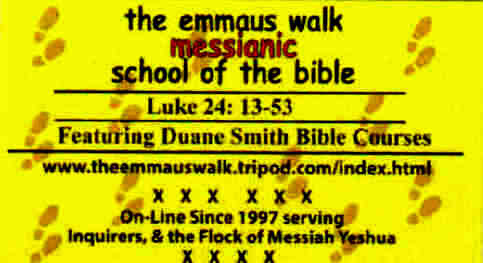
THE EMMAUS WALK PRESENTS:
"Mary and the Beanstalk,"
by John W. Cowart
The Christian Reader, March/April 1991

Nineteenth Century Africa wasn't prepared for this feisty missionary pioneer.
Scores of African warriors surrounded Presbyterian missionary Mary Slessor. Some rattle ironwood spears agains their rhinoceros-hide shields. Some shook clubs in the lone woman's face. Others swung broad, flat-ended swords over her head. All screamed and shouted at her.
Still she would not give them back their beans.
She marched through the ranks of screaming, drunken warriors to her mud hut, carried the sack of beans inside, shut the door, and went to bed.
All night the warriors milled around outside her door, drinking more trade rum, cursing, and wondering what to do about the bag of beans.
It was 1890 near the mouth of the Calabar River in Calabar, Africa, a country on the west coast just north of the Equator.
Calabar, the Slave Coast of Africa, took its geographic names from the area's two most notable features: slavery and the Calabar bean.
The Africans of the Slave Coast continued to enslave each other long after Europe and the United States abolished slavery. Strong tribes captured weak ones and sold them to other tribes to Arab slave traders.
Use of the poisonous Calabar bean also shaped the area's culture.
The brown bean grows in pods about six inches long. Nothing in the bean's taste, smell, or appearance distinguishes it from other beans. The difference is discovered after it is eaten.
Then the bean's chemical increases the output of the victim's salivary gland as it constricts the blood vessels leading to those glands. Blood pressure rises. Violent vomiting begins. Tremors and convulsions of the spinal cord set in. Yet, mental functions are not affected; the victim remains conscious of what is happening to him during this. Feeding sacrificial victims the Calabar bean and watching the ensuing show comprised a major part of the country's religious heritage.
Four other elements characterized the religious animism of the area: fear of Juju, evil spirits believed to reside in trees, rocks, and animals; fear of witchcraft; fear of secret societies, known as Egbo; and fear of dying alone.
The religious fears of the people came out in the burial customs. The more important the dead man, the higher the number of wives and slaves who were strangled at his graveside to be buried with him.
Another fear was in the people's dread of twins. They believed that a human man could only begat one child at a time. Therefore, if a woman gave birth to twins, that meant she had been having intercourse with a demon.
A living twin was thought to be a demon incarnate. Newborn twins were immediately stuffed into clay pots and left outside the villages for ants to eat.
Why would a lady want to leave civilized Scotland and go to a place like Calabar? What would keep her there for 39 years as a missionary?
PLEASE RETURN FOR MORE OF THIS TRUE ACCOUNT.

The Emmaus Walk Home Page

Format Only: (c) 2010, Butterfly Productions, All Rights Reserved

